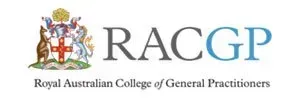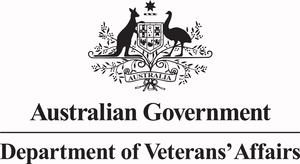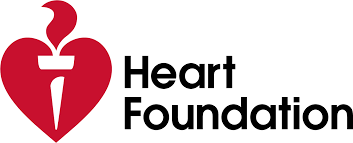Workcover and Occupational Health
What are Workplace Injuries?
Workplace injuries are any physical or psychological harm that an employee suffers while working on the job. They can range from minor cuts and bruises to severe fractures, traumatic brain injuries, and even death. Workplace injuries can occur in any work environment, including offices, factories, construction sites, hospitals, and restaurants.
Worker’s Compensation Cover
What is a Worker's Compensation Cover?
Worker's compensation coverage is a system of insurance that provides financial assistance and support to workers injured or ill due to work. The system is designed to help workers cover the costs of medical treatment, lost wages, and other expenses related to their injuries or illnesses.
Importance of Worker's Compensation Cover
Worker's compensation cover is essential because it provides a safety net for injured workers who become ill due to work. It helps ensure that workers can access the medical treatment and financial support they need to recover from injuries or illness and return to work.
Benefits of Workers Compensation Cover
- Financial assistance to cover the cost of medical treatment and other expenses related to an injury or illness
- Payment of lost wages while the worker is unable to work
- Rehabilitation services to help the worker return to work
- Coverage for permanent impairment and death
- Access to dispute resolution process if there is disagreement about the claim
Workers Compensation Coverage
All employees are covered by worker's compensation insurance, including full-time, part-time, casual, and seasonal workers, apprentices, and trainees. Self-employed individuals and independent contractors may also be eligible for coverage under certain circumstances.
In Australia, worker's compensation is mandatory, and employers must have coverage for their employees through a state-based scheme or a private insurer. The employer is responsible for paying for the insurance and providing employees coverage.
Worker's compensation coverage typically provides coverage for:
- Medical expenses, including hospital and rehabilitation costs
- Lost wages or salary while the worker is unable to work
- Permanent impairment and death benefits
- Rehabilitation services
Occupational Health
What is Occupational Health?
Occupational health is the branch of medicine concerned with the protection and promotion of the health and safety of workers in the workplace. This includes preventing and managing work-related injuries and illnesses and promoting healthy and safe working conditions.
Occupational health services may include physical examinations, medical screenings, workplace assessments, and developing health and safety programs.
Importance of Occupational Health
Occupational health is essential because it helps to ensure that workers can perform their jobs safely and effectively, which can help to prevent injuries and illnesses caused by work-related hazards.
This, in turn, can lead to increased productivity, lower absenteeism and turnover rates, and reduced worker compensation and healthcare costs.
What are the Benefits of Occupational Health?
Some of the benefits of occupational health include:
- Preventing and managing work-related injuries and illnesses
- Improving productivity and reducing absenteeism
- Reducing healthcare costs
- Compliance with legal and regulatory requirements
- Improving employee engagement, motivation and loyalty
- Enhancing the reputation of the company
- Demonstrating commitment to employee well-being
What are the Types of Occupational Health?
There are several different types of occupational health, which include:
- Occupational medicine: This branch deals with preventing, diagnosing, treating, and rehabilitating work-related injuries and illnesses.
- Industrial hygiene: This field focuses on identifying and assessing workplace hazards, such as chemicals, noise, and radiation, and developing strategies to control or eliminate these hazards.
- Occupational safety: This field deals with developing and implementing safety programs and policies to prevent accidents and injuries in the workplace.
- Ergonomics: This field focuses on the design of the workplace and equipment to minimise the risk of musculoskeletal disorders, such as back pain and repetitive stress injuries.
- Environmental health: This field deals with the assessment and management of environmental factors in the workplace, such as air quality, water quality, and hazardous materials.
- Employee assistance programs: These programs provide counselling and support services to employees to help them cope with personal or work-related problems that may impact their health and well-being.
- Occupational health psychology: This field deals with the psychological aspects of work, such as stress, burnout, and work-life balance, and the impact of these factors on worker health and well-being.
These different types of occupational health work together to ensure the workforce's overall well-being, safety and health.
Pre-Employment Medicals
Pre-employment or pre-placement medical examinations are evaluations conducted before an individual is hired. These evaluations aim to assess the individual's physical and mental health and determine whether they can perform the job's essential functions.
A pre-employment medical examination typically includes a review of the individual's medical history, a physical exam, and specific laboratory tests such as blood and urine tests. Depending on the nature of the job, the examination may include additional tests, such as a respiratory function test, a hearing test, or a vision test.
The information gathered during a pre-employment medical examination is used to identify any health conditions that may impact the individual's ability to perform the job safely and effectively. If any issues are identified, the employer may make accommodations to help the individual perform the job or may determine that the individual is unsuitable.
Pre-Employment Medical Services
We offer pre-employment health assessments. To arrange a health assessment for an employee, please contact our practice. Pre-employment medical can include any of the following:
- Driver’s License Medicals
- Spirometry
- General Health Check-up
Driver’s License Medicals
Driver's licence medicals, also known as a driver's fitness examination, is a medical evaluation conducted to determine whether an individual is medically fit to operate a motor vehicle. Government agencies typically require the assessment to issue or renew a driver's licence.
A driver's licence medical examination aims to assess an individual's physical and mental health and identify any conditions that may impact their ability to operate a vehicle safely. The assessment typically includes reviewing the individual's medical history, a physical examination, and specific laboratory tests such as blood and urine tests. Depending on the individual's age and medical history, additional tests such as an electrocardiogram (ECG) or a vision test may be required.
Benefits of Driver’s License Medicals
- Reduce the risk of accidents caused by medical conditions that impair driving ability.
- Identify and address health conditions that may impact driving ability
- Help ensure that only medically fit individuals are operating vehicles on the roads
- Help ensure that individuals with certain medical conditions are aware of the need to manage their conditions to maintain their driving ability
Driver’s License Medicals Procedure
The procedure for driver's licence medicals typically varies depending on the requirements of the government agency responsible for issuing or renewing driver's licences. In general, however, the individual will be required to complete a medical questionnaire, undergo a physical examination, and provide additional information or test results.
The examination results will be reviewed by a licensed physician, who will then make a recommendation regarding the individual's fitness to drive. The government agency will then decide on issuing or renewing the driver's licence based on the examination results and the physician's recommendation.
Spirometry
Spirometry is a type of pulmonary function test that measures the amount of air a person can inhale and exhale and how quickly and forcefully the person can exhale. The test is typically done using a spirometer, consisting of a mouthpiece connected to a machine that measures lung function.
Why is Spirometry Needed?
Spirometry can be useful in pre-employment medicals for certain occupations where respiratory function is important, such as firefighters, miners, and other workers in dusty or polluted environments.
The spirometry test can help assess a candidate's lung function and determine whether they can perform the job safely. For example, a firefighter with impaired lung function may be at increased risk of injury or illness when performing strenuous tasks in a smoke-filled environment.
Spirometry can also be part of ongoing occupational health surveillance programs to monitor respiratory health over time and identify early signs of respiratory impairment.
Spirometry results should be interpreted by a qualified doctor familiar with the individual's medical history and other relevant factors. Sometimes, spirometry may need to be combined with other tests or assessments to get a complete picture of a person's respiratory health.
General Health Check-up
This examination typically includes a review of the individual's medical history, a physical exam, and specific laboratory tests such as blood and urine tests.
Insurance Medicals
Insurance medicals, also known as insurance health checks or medical examinations, are medical assessments conducted by healthcare professionals to determine an individual's health status and risk factors for certain medical conditions. Insurance companies often require these assessments when an individual applies for or renews an insurance policy, such as life, disability, or income protection insurance.
What is Included in Insurance Medicals?
Insurance medicals can vary in scope and complexity depending on the type of insurance being applied for, the applicant's age, and their medical history. However, insurance medicals typically include the following components:
- Medical history review: The doctor will review the applicant's medical history, including past illnesses, surgeries, medications, or chronic health conditions.
- Physical examination: The doctor will conduct a physical examination, which may include measurements of height, weight, blood pressure, and other vital signs. They may also examine the applicant's heart, lungs, abdomen, and other body systems.
- Laboratory tests: The doctor may order laboratory tests, such as blood or urine tests, to screen for medical conditions or risk factors.
- Diagnostic tests: Depending on the applicant's age and medical history, the doctor may order additional diagnostic tests, such as imaging studies or electrocardiograms (ECGs), to assess the health of specific organs or body systems.
- Lifestyle and risk factor assessment: The doctor may ask the applicant about their lifestyle habits, such as smoking or alcohol use, and assess their risk for certain medical conditions based on age, gender, and family history.
- Mental health assessment: The doctor may ask the applicant about their mental health history and assess their risk for mental health conditions, such as depression or anxiety.
Why Are Insurance Medicals Needed?
The purpose of insurance medicals is to assess an individual's health status and risk factors, which may impact their eligibility for insurance coverage or affect their insurance premiums. Insurance companies use the medical assessment results to determine the risk level associated with insuring an individual and setting premiums accordingly. In some cases, insurance medicals may be required periodically to monitor changes in an individual's health status over time.
Insurance medicals are an important part of the insurance application process. They help insurers make informed decisions about coverage and premiums and provide individuals with valuable information about their health status and risk factors.








